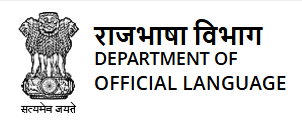Off late several cases have come to the notice of this Directorate where the people have been conned, cheated and robbed of their money by conman. Recently, a case of this nature has been recorded by the Directorate of Enforcement (ED) against the known conman Sukesh Chandrasekhar. He with the help of spoofing technology, made calls to dupe people and spoofed the phone numbers of senior Govt. officials offering them help in lieu of money. In this manner, Sukesh Chandrasekhar has extorted money to the tune of Rs. 200 Crore. Further, few other incidents of issuing fake notices by conman to people for extorting money have also been noticed and some of these conman have been arrested too.
It is possible to save oneself, near & dear ones from getting conned. Let us understand how it is done:
Modus: Use of Spoofing technology
Call Spoofing is defined as an act of disguising a phone call from an unknown source as being from a known source. In other words, it is a process of changing the Caller ID to any number other than the actual calling number.
Spoofing enables the caller to reflect any number desired by him/her on the screen of called number. Whereas, in reality, no calls are being made from the number so reflected. The receiver of the spoofed calls tends to believe that it is a genuine call from that number and starts getting conned or falling into the trap of conman. The Conman then through using various decoys convinces the victim for payments. The victim gets into the trap of Conman and gets exploited financially.
Conman normally spoofs the phone numbers of government functionaries. The call would look normal and even the ‘True Caller’ App verification reflects that indeed the phone number pertains to these authorities.
Process
The process starts with identification of victim by the conman. Neither everyone is aware of Government structures and hierarchy, nor of the functions and duties of govt. servants. Unscrupulous persons take advantage of lack of information and con people. The conman on identification of such person takes advantage of their vulnerability/lack of knowledge of governmental functioning by making fake promises by impersonating as government officials. These promises look attractive and doable. This leads to beginning of putting faith on the conman and later on extortion under the guise of offering help.
Following major steps are involved in the process :-
| Conman identifies the person whom he wants to con | He also identifies the government office, a call from which would be believed by the person. | He uses call spoofing technology and makes spoofed calls to the victim | Conman convinces the person to make financial transaction (s) | The person falls into the trap and gets duped leading to financial loss |
Precautions to be taken
- 1. It is advisable that anyone who is receiving calls from the government landline numbers especially when not expected, SHOULD cross verify with that number by dialing the number again after sometime.
- 2. If a call is received from government offices, adequate precautions should be taken to note down the name and designation of the person calling. Thereafter, all efforts should be made to cross verify the information given by the calling person with the other sources like govt. website or by calling other office numbers of the same office as available on website.
- 3. Most of the government offices have a contact number on their websites. It is better to contact them and cross verify.
- 4. Avoid divulging of personal/family details to someone on phone whom you have not met before or whose credentials have not been established.
- 5. All official correspondences from the Directorate of Enforcement are done through letters, summons, notices, etc. issued under the relevant provisions of the laws which are generally despatched through post or emails. In case of doubt with respect to any letter, summon, notice, etc. received from ED, it is advisable to get it cross verified.
Point of contact in ED for cross verification
In case of any doubt with respect to any call, summons, letter, notice, etc. received from Enforcement Directorate, it is advisable to contact the following designated points of contact over telephone or email :-
| Description | Details |
|---|---|
| Name of contact person | Sh. Ankur Jaiswal |
| Designation | Assistant Director |
| Address | Directorate of Enforcement (ED), A - Block, Pravartan Bhawan, APJ Abdul Kalam Road, New Delhi-110011 |
| Telephone no. | 011-23339178 |
| Email id | adint.hq-enforce[at]gov[dot]in |
| Description | Details |
|---|---|
| Name of contact person | Sh. Jogender |
| Designation | Assistant Director |
| Address | Directorate of Enforcement (ED), A - Block, Pravartan Bhawan, APJ Abdul Kalam Road, New Delhi-110011 |
| Telephone no. | 011-23339173 |
| Email id | adiinv2-ed[at]gov[dot]in |





